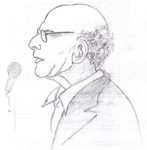 Looking for all the world like a college anthropology professor, Art Garfunkel took the stage wearing a tieless tuxedo to telegraph the tone of the show: Serious artist, easygoing attitude. Garfunkel reinforced that feeling repeatedly during the show by speaking directly with audience members—for example, chiding one individual for looking at a cell phone (“More interesting than what’s up here? Give it a chance.”), or a cougher (leaning out over the stage: “Are you OK?”) and responding directly to the occasional shout-outs from the audience.
Looking for all the world like a college anthropology professor, Art Garfunkel took the stage wearing a tieless tuxedo to telegraph the tone of the show: Serious artist, easygoing attitude. Garfunkel reinforced that feeling repeatedly during the show by speaking directly with audience members—for example, chiding one individual for looking at a cell phone (“More interesting than what’s up here? Give it a chance.”), or a cougher (leaning out over the stage: “Are you OK?”) and responding directly to the occasional shout-outs from the audience.
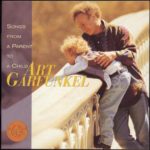 Garfunkel began not with a song, but an advisory that he’d be reading from his book of poetry throughout the show (showed the book, thanked publisher Knopf). The poems center on his home life, childhood, health, his children (particularly the 12-year-old in the audience) and his relationship with his career. Garfunkel read his poetry and ran commentary on it, roughly on a one-to-one ratio with the songs.
Garfunkel began not with a song, but an advisory that he’d be reading from his book of poetry throughout the show (showed the book, thanked publisher Knopf). The poems center on his home life, childhood, health, his children (particularly the 12-year-old in the audience) and his relationship with his career. Garfunkel read his poetry and ran commentary on it, roughly on a one-to-one ratio with the songs.
He was accompanied by UK/NYC pianist Dave Mackay and Nashville guitarist Tab Lavin, both of whom occasionally stole the show, musically. Happily, the men received their well-earned due from Garfunkel early and often during the show. The MIDI machine which provided occasional percussion thankfully didn’t intrude much.
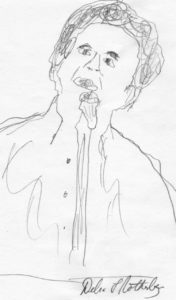 Garfunkel spoke about and read from poems concerning his voice: how he lost it six years ago and is now rebuilding it in public. Honestly, from this performance, he may never recover the ethereal high notes which immediately elevated songs like “Bridge Over Troubled Waters” and “For Emily” (among many others) from “amazing song” to “legendary” status. He introduced the last song of the set, “Sound of Silence,” saying, “Here is the song that changed my whole life.”
Garfunkel spoke about and read from poems concerning his voice: how he lost it six years ago and is now rebuilding it in public. Honestly, from this performance, he may never recover the ethereal high notes which immediately elevated songs like “Bridge Over Troubled Waters” and “For Emily” (among many others) from “amazing song” to “legendary” status. He introduced the last song of the set, “Sound of Silence,” saying, “Here is the song that changed my whole life.”
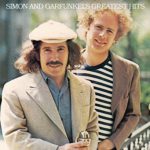 The length of Simon & Garfunkel’s collaboration depends on who’s counting (beginning from childhood, in 1953; from Tom & Jerry, ’57; Simon & Garfunkel released 10/1964; Simon & Garfunkel, success with “Sounds of Silence,” 1/1967; The End: announced breakup, 1970; or Concert in Central Park, 1981), but the duo’s 80 or so songs remain timeless, and it is the razor harmonies and Art Garfunkel’s voice that identify most of that music.
The length of Simon & Garfunkel’s collaboration depends on who’s counting (beginning from childhood, in 1953; from Tom & Jerry, ’57; Simon & Garfunkel released 10/1964; Simon & Garfunkel, success with “Sounds of Silence,” 1/1967; The End: announced breakup, 1970; or Concert in Central Park, 1981), but the duo’s 80 or so songs remain timeless, and it is the razor harmonies and Art Garfunkel’s voice that identify most of that music.
No fool, Garfunkel played to the larger audience, sticking—by my rough calculations 80%—to Simon & Garfunkel songs written a half century ago. Raspy, whispery, quavering, and here and there pitchy, he opened with “April Come She Will,” then, as promised, alternated with a poem from his book about losing his voice, and waiting for it to return. “But the heart is still young, and the voice has come back,” he read.
Bob Dylan (whose own vocals were never perfect) now goes on the road singing his own 50-year-old songs in an unrecognizable rasp, with drastically changed rhythms and melodies to the point that the audience is three-quarters into the song before they realize it’s actually “Blowin’ In the Wind.” Art Garfunkel, on the other hand, follows the original in both melody and tempo so closely that the difference in his vocals and lack of harmony is, in many cases, the only departure from the original. The second song, “The Boxer” stuck to the script, unfortunately losing those high notes and the harmony, but Tab Lavin played an extended solo toward the end which really picked the tune up. Coming back for the final verse, Garfunkel changed it up a bit and finally got some fire into his performance, to warm applause.
Look at S&G’s Greatest Hits album to find the setlist for Town Hall’s performance: he played most of ’em. Interestingly, Garfunkel listed his favorite songwriters: Paul Simon, James Taylor, Jimmy Webb, Stephen Sondheim, and Randy Newman (no Dylan, Cohen, Brill Building, Billy Joel, Beatles), and one of the highlights of the evening for this writer was the Randy Newman song, “Real Emotional Girl.”
Two more high points also skirted the Simon & Garfunkel catalogue: once, during one of the poems he interjected between each song, Garfunkel launched into a lengthy prayer that he sang at his childhood synagogue during services, an experience which he said launched his performance addiction, and, though I didn’t understand a word, I was deeply moved. The encore, from his own Songs From a Parent to a Child album, “The Lord’s Prayer/Now I Lay Me Down To Sleep” proved as simple and honest as his softly spoken goodbye: “Good night, New York.”
—Suzanne Cadgène
PS: When our photographers arrived at the venue, we were belatedly told that the artist had requested no photography. The photogs re-hoisted their bags and went home empty-handed and a little the worse for wear. Photographer Debra L. Rothenberg did a sketch from memory, and inspired me to do one of my own. Sorry, guys, no photos.


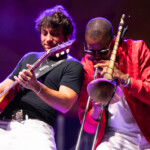

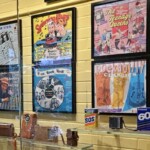


Be the first to comment!